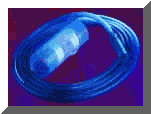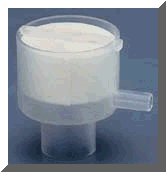Trach-ties
Oxygen
Trach-ties
Oxygen Basics
Oxygen, a colorless, odorless gas, and one of the most essential gases to life. Even though it only makes up, on average, twenty-one percent of the air we breathe it is more essential to our survival and ability to function than all the other gases combined.
Most people go through life doing well on that twenty-one percent. Those with chronic diseases that decrease the amount of oxygen their bodies takes in or is able to distribute to their tissues need more than the air around us can offer. There can be many causes: COPD (Chronic Obstructive Pulmonary Disease), Emphysema, Asthma, Cystic Fibrosis, CHF (Congestive Heart Failure), sarcoidosis, Pulmonary Hypertension, Pulmonary Fibrosis, muscle weakness that affects the diaphragm ( Myesthenia Gravis, Muscular Dystrophy ).
When diseases such as these strike more oxygen is needed. Usually it is started in a hospital setting. We are fortunate with modern medicine that oxygen is now available for home use for those who need it. It is no longer required that the person needing the oxygen be admitted to an acute or chronic care facility. Home oxygen is getting to be more common place.
There are many different forms of oxygen that are used in the home setting. Depending on what your physician is comfortable with, and your supplier has on hand is the biggest determining factors.
Most suppliers state that you don't need humidification for a flow rate less than 3 liters per minute. Any flow rate for short periods do not need to be humidified. Oxygen being the dry gas that it is may need to be humidified at lower flow rates depending on the person. Sterile or distilled water should be used. Optimally sterile distilled is best, but rarely found. The humidifier should be emptied daily and cleaned using warm soapy water then soaked in a 1:4 solution of vinegar to water for 30 minutes to sanitize it. As the oxygen passes through the water it is humidified. Those with trachs will need the extra humidification to prevent tracheal drying or plug formations.
Many have "oxygen concentrators" in their homes. This takes room air and concentrates it so that it delivers 91-96% oxygen. It requires electricity. Most models are sensitive to power surges. The manufacturers and providers do NOT recommend surge protectors despite this. Once the concentrator is plugged in and turned on a humidifier can be added if desired, or just connect a long tubing to the machien to allow the person some movement. It then is attached to either the nasal cannula, or other oxygen device, such as the Thermovent T oxygen attachment for trachs. Remember to clean the filters on the machines twice weekly to keep them in optimum working capability. Another factor I have found is keeping them in low traffic areas with linoleum or hardwood floors will help cut down on the dust collected on
the filters. Washing them with warm water and mild soap is usually all that is required. Then air dry. (Using back up oxygen while the machine is off to clean the filters.) Be sure to have an emergency back-up incase of power outage. Most suppiers will maintain you with an "M" cylinder or recommend that you have atleast 2 "E" cylinders on hand for emergencies. Concentrators tend to be noisy beasts. Personally I keep mine in the foyer of the house away from sleeping areas. Where ever you decide to put it give it enough room to "breath" so that it doesn't overheat or cause a fire. You can put them away from where the patient stays thanks to long tubings. Just be careful in the use of the long tubings. Some put them on hooks along the walls or run them along walls to keep them out of traffic areas.

Mobilaire 5 by Invacare
Another common form is Liquid Oxygen. This is just as the name implies. They are tanks with Liquid Oxygen in them that can be used either in the home or put into smaller portable canisters for use away from home. Liquid Oxygen cylinders can be refilled by the person at home without having them replaced by a supplier like the standard oxygen cylinders. There is a slight increase in explosion hazard with the liquid compared to the standard cylinders or concentrator. The same applies once you have it functioning, attach the long (25 or 50 foot) tubing to the machine then whatever oxygen attachment you are using, whether its mask, cannula or trach device. Your supplier will usually come about once a week to refill the liquid oxygen in the tanks, depending on usage.



Liquid Oxygen and refillable portable
Oxygen away from home for errands or appointments, or for power outages, is through the use of oxygen cylinders. These are pressurized metal cylinders that you can attach a regulator to control the oxygen flow and to tell how much is in the cylinder. Depending on the liter flow, it can last from 3 to 6 hours for an "E" cylinder. Larger "M" cylinders can last more than 24 hours. Smaller "D" cylinders last apporximately 2 to 6 hours depending on flow.



E cylinder in cart - - - D cylinder in carrier
Oxygen Delivery
Products or links listed are in no particular order. No particular product is endorsed or supported by Trach-ties. These links are for informational purposes only.
Oxygen is administered many ways. The way chosen is dependent on the needs of the patient.
Cannula is a small tubing that goes over the ears and has 2 small tubings that one goes into each nostril. This is the most common means of delivery for home oxygen use.

image courtesy of SaltersLabs
Another means is through "Simple Mask" for those who do not tolerate cannulas or need a higher oxygen concentration. It is a plastic mask that goes over the nose and mouth. It needs to have a good fit.

image courtesy of SaltersLabs
One unique means of oxygen delivery that is more comfortable than a cannula is an OxyFrame. They look and feel like glasses, but they have small tubings that go into each nostril. They are supplied by Salter Labs.

Oxyframe-image courtesy of SaltersLabs
For those with trachs it is a little more difficult. The oxygen needs to get to the trach rather than the normal upper airway. Some trach attachments have a port to attach the oxygen tubing. Others have a sleeve that goes over the HME.



images courtesy of Portexand Mallinkrodt/Nellcor
Oxygen Safety Tips
Oxygen is a gas not to be taken lightly. It has the ability to support combustion, aka fire, more than most people would like it to.
Never use oxygen near open flame. Not that it will explode. It supports combustion, meaning it will make one super flame. Oxygen should be kept atleast 25 feet from any open flame, including candles, lit cigarettes or other smoking materials and fireplaces. If you have any doubt...oxygen used in the presence of a lit cigarette can make it burn so fast and hot that it will be gone in one second. It will make a flame flare beyond what you could imagine. Most oxygen suppliers offer signs to be posted on your door stating NO SMOKINGOxygen in Use.
Be sure to have operating smoke and/or flame detectors in your home, at a minimum on each level of your home. Ideally one on each level as well as outside every bedroom. If you cannot afford one call your local fire department, many have programs to supply them to their area to help them save lives. It only takes seconds in a fire to become asphyxiated and unable to get out on your own.
Along with the detectors, it is wise to have a multiclass fire extinguisher. Multiclass meaning an "ABC" type extinguisher. There are home extinguishers available in most department stores as well as online. Having one on each level of your home is ideal, but atleast one in the home is imperative.
Store tanks as directed by the manufacturer. Most cylinders are recommended to be kept in an upright position and supported. If they tip or fall over they can become missles since the contents are under pressure. Its an experience you will never forget. I have made an old soda crate into a stand for the tanks. The crate has foam between the cylinders. It is also recommended to keep them in an open area. One person had told me to keep them close to a window, but not the main or secondary exits of the home in the event of fire they can be evacuated by fire fighters after the fire is controlled.
It is possible to travel with oxygen. Some suppliers have offices all over the country. If you call them and make arrangements with them they can have your needs met at your destination.
Some companies specialize in travelling oxygen. Most commercial air carriers will have oxygen for use by a passenger, but it is quite costly, ranging from $75.00 and up, per leg of your trip. They will not allow tanks or concentrators on commercial carriers due to their explosion hazard (becoming missles) with drastic changes in atmospheric pressure. Remember the ValueJet flight that went into the Everglades due to Oxygen concentration canisters? So for the safety of the flying public oxygen that we use is not allowed aboard commercial carriers.
Amtrak and other train carriers do allow tanks as well as concentrators on board.
If you are planning a cruise or other excursion you can contact other Travel Oxygen specialists and they can help you make arrangements for your trip. Some are listed below.
Oxygen Links
American Lung Association Oxygen Factsheet
Home Oxygen by Thimedical
American Association of Respiratory Care - Home Oxygen Tips
Test your Home Oxygen Knowledge
Home Oxygen tips from the University of Missouri
Salters Labs
Respira Medical
Apria Healthcare
Lincare Oxygen and DME Suppliers
Travelling with Oxygen
Advanced Aeromedical Travelling Oxygen Services
Breathing Easy Travelling by Air
Oxygen Travel Net
Disclaimer; In no way are these web pages or links intended to replace care by a qualified medical professional. They are here for information only. If you feel you fit any of the symptoms listed in any of these links you should seek care from a qualified medical professional.
Contact Trach-ties at trachies@gmail.com
















